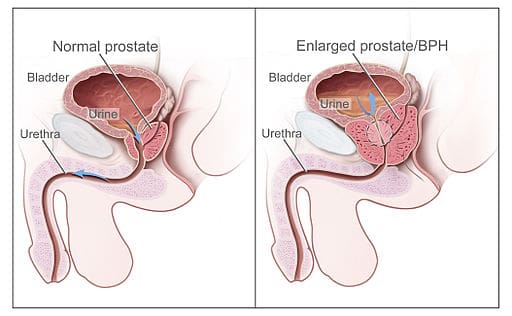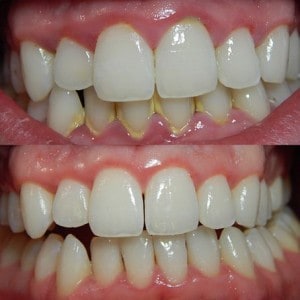Benign prostate enlargement is a condition associated with ageing and is common in men over 50 years of age. Around 4 out of 10 men (40%) over 50, and 3 out of 4 men (75%) in their 70s have urinary symptoms caused by an enlarged prostate.
Source: Benign prostate enlargement @ NHS Choices
Video
Read more
- Benign prostatic hyperplasia @ Wikipedia
Excerpt: Benign prostatic hyperplasia (BPH), also called benign enlargement of the prostate (BEP) and adenofibromyomatous hyperplasia, is a benign increase in size of the prostate. BPH involves hyperplasia of prostatic stromal and epithelial cells, resulting in the formation of large, fairly discrete nodules in the transition zone of the prostate. When sufficiently large, the nodules impinge on the urethra and increase resistance to flow of urine from the bladder. This is commonly referred to as “obstruction,” although the urethral lumen is no less patent, only compressed. Resistance to urine flow requires the bladder to work harder during voiding, possibly leading to progressive hypertrophy, instability, or weakness (atony) of the bladder muscle. Although prostate specific antigen levels may be elevated in these patients because of increased organ volume and inflammation due to urinary tract infections, BPH does not lead to cancer or increase the risk of cancer.
Image: See page for author [Public domain], via Wikimedia Commons




